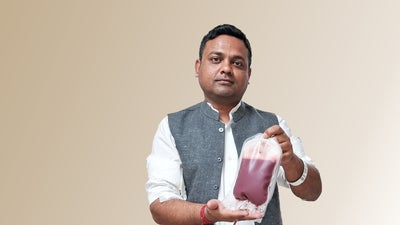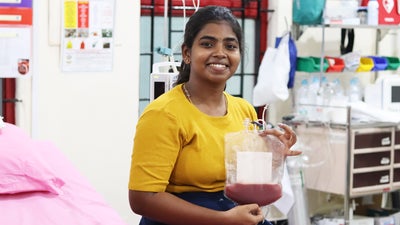One in a thousand or one in a million!
The link between HLA matching and donor ethnicity. We’re here to help you understand the connection between HLA matching and donor ethnicity
Someone in India is diagnosed with blood cancer or a blood disorder every 5 minutes. More than 100,000 people are diagnosed with blood cancer or a blood disorder each year. A stem cell transplant (Peripheral Blood Stem Cell collection) offers the best chance of survival. This transplant can come from a sibling or a family member. However, there is only a 30% chance of finding a matched sibling donor in the family. The remaining patients have to search for a Matched Unrelated Donor (MUD) from a Registry or Donor Centre — a database of voluntary donors between the age group of 18 to 50 years.
A stem cell or bone marrow transplant is likely to be successful only if the donor’s HLA type is a close match to that of the patient. The body’s immune system has proteins known as Human Leukocyte Antigen (HLA) to distinguish cells that belong to the body from those that do not. Thus, HLA distinguishes between self and non-self. A person’s HLA type is determined by genes located on chromosome 6, one copy of which is inherited from each parent. The chances that two siblings will have a matched HLA type is 25% since they match only if they both inherit the same version of chromosome 6 from each parent (Mendelian law). A specific combination of alleles for HLA-A, HLA-B, and HLA-DRB1 on one chromosome is known as a Haplotype. An individual’s HLA compatibility is determined by the full list of six genes (alleles) on his/her two copies of chromosome 6. This is known as Phenotype.
India is the second-most populous country in the world with a population of 1.3 billion, with 22 official languages. India is a melting pot of various cultures, ethnic groups, and immigrants from the world over. India with its different ethnicities, cultures, languages and marriages within communities has resulted in a unique gene pool and HLA frequency pattern. It is known that each linguistic group has a unique haplotype with common haplotypes in certain communities.
HLA varies with ethnicity. Patients are most likely to find a match in their own ethnicity. Several studies have proved that people from the same ethnic background are more likely to have the same HLA alleles. For example, the HLA haplotypes in South Indian and North Indian populations are distinct. Also, studies in various caste groups reveal that each caste group has its characteristic HLA-A and HLA-B haplotypes.
It is difficult today for an Indian patient to find a matching donor for a blood stem cell transplant. This is because of at least three reasons. First, with the shrinking size of families, the possibility of finding a sibling donor reduces. Second, Indians are poorly represented in the donor pool of registries — 0.03% of Indians are registered as potential blood stem cell donors in Indian registries. Third, HLA occurs in millions of combinations, patients of more diverse ethnic backgrounds also tend to have more diverse HLA types, making it even more difficult to find a match. Finding a matching donor with the exact same combinations is like searching for a needle in a haystack. As discussed above, the chances of finding a match in European or American registries is very low considering the unique HLA alleles of the Indian population. With the increasing number of mixed-community marriages, the HLA distribution of future generations is likely to become heterogeneous. Thus, the only hope for an Indian patient diagnosed with blood cancer or a blood disorder is a Matched Unrelated Donor (MUD) from a large pool of donors of Indian origin.
Currently, India does not have a sufficiently large registry of adult donors. Increasing the number of Indian donors in the database will add to the data pool of HLA diversity. Increasing the numbers of Indian donors in a database will improve the likelihood of a suitable match. The number of potential donors registered determines the chances of finding a match. The more people in a registry, the more likely it is to find a match. This could be 1 in a million; and with more donors stepping forward, it could be 1 in 1000 in the future.


